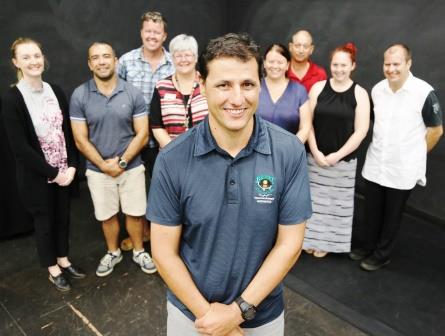Op-Ed: Restricting report card comments hurts diagnostic accuracy
By Dr Lisa Myers, Child Adolescent Psychiatrist

A teacher’s observations and insights can add to the diagnostic process.
As a child and adolescent psychiatrist, I frequently rely on the report card to assist in making a diagnosis of ADHD or autistic spectrum disorder. Without having the teacher’s detailed and holistic information, we run the risk of inaccurate diagnosing.
The NSW Department of Education guidelines state that academic report cards must begin with positive comments and teachers must not comment on a student’s bad behaviour unless it is relevant to identifying areas of academic improvement. Schools can choose to use general comment banks and they should avoid making predictions about a student’s future performance by avoiding words such as ‘should’ and ‘will’.
Although it is imperative to provide children with positive reinforcement and constant encouragement and more so for the child who is already struggling at school and has low self-esteem, it is equally important to build resilience in our children.
Undesirable comments need not be viewed as a personal attack (unless they are) or adopted as a self-judgement, as this will result in ill feelings and a missed opportunity to reflect objectively on the possible reasons underlying a child’s ‘bad’ behaviour.
Children are not born wanting to do wrong and they generally do not want to behave poorly.
Children seek validation, recognition, acceptance and love. With this in mind, any feedback about a child’s unacceptable actions should prompt educators, parents and health professionals to explore the likely options, such as developmental issues, temperament, a lack of understanding, a mental health diagnosis, environmental factors or not knowing the expectations.
The Education Department’s decision possibly removes this warning signal, call to action and the benefits of an early intervention.
It also raises a number of additional concerns for the long-term wellbeing of our children.
The dialogue surrounding the lack of resilience displayed by our younger generations is ongoing, but the Education Department’s guidelines appear to be another example of how we prefer to wrap our children in cotton wool and buffer them from any negativity, frustration, upset or critique.
Similarly, a previous decision by the Education Department to adopt assessment-based learning (where parents and tutors can help), instead of traditional study and examinations has perhaps disabled our children, whose competencies in literacy and numeracy are on the decline.
Furthermore, the tendency to adopt grading systems that focus solely on effort to avoid comparing a child’s ability to their peers, potentially only removes the spotlight on an underlying issue that could be remedied.
Our children aren’t given enough opportunity to struggle and get through – not always with positive results.
However, these moments will help our children to grow and develop the skills they need to manage future challenges. Forgotten are the days of having a single winner in ‘Pass-the-parcel’; and it is deemed unfair not to invite the entire class of friends to a party.
These practices fail to equip our children for the reality that awaits when they reach adulthood. Life will present them with frequent obstacles to overcome and learning to tolerate, problem-solve and rebound are critical ‘survival’ skills.
The classroom should be seen as a safe and warm environment for a child to initially encounter these challenges and develop the skills and resilience necessary to overcome such obstacles before facing the real world.
I imagine that the Department’s constraints also frustrate the educators who are already burdened by the demands of legislation, social pressures and parents. Being dictated by these rules and regulations surely prompts resignations, as teachers are unable to implement best practice.
Beyond the classroom, health and other professionals use a child’s academic report card as additional, valuable information when assessing a child or adolescent presenting symptoms.
A study performed by researchers at the University of Sydney in 2021 concluded that attention deficit hyperactive disorder (ADHD) is overdiagnosed.
Children were being diagnosed at a younger age which was likely pathologizing their emotional immaturity. Due to a widening of the diagnostic criteria more children were said to have ADHD than was previously the case. In situations such as these, a teacher’s insights can prove invaluable and help to tease out the many impacting factors.
A report card circumvents having to ask the teacher directly, when they are busy in the classroom and it can be difficult to find enough time to have lengthy discussions about their many students (and our many clients).
Given the lengthy wait times that already exist to see a mental health professional, having easy access to collateral information becomes more pertinent.
Simple comments on a report card such as ‘the child is obstructive’, ‘can be inflexible or rigid’, or ‘doesn’t have a clear friendship group on the playground’ can be extremely helpful. These observations should be discussed and explored with the parents and teachers and never result in a child being punished or ridiculed.
Understanding a child’s behaviour allows for a clear management plan to be implemented that can help the child to progress and achieve their potential. Positive reinforcement and hopeful messages are a key component of such an action plan.
We need to know there is a problem before we can begin to fix it.
Learning to decipher and respond to feedback is an important life skill, as is building our self-worth beyond our achievements, learning to understand our behaviours and manage our emotions. These processes grow our ability to self-regulate, maximise our strengths and improve our areas of weakness.
We should not raise our children with the expectation of achieving perfection. Our job is to foster their resilience and ability to cope with the ongoing upheavals they will face. We cannot remove all battles, but we can provide the armour they need to survive.







